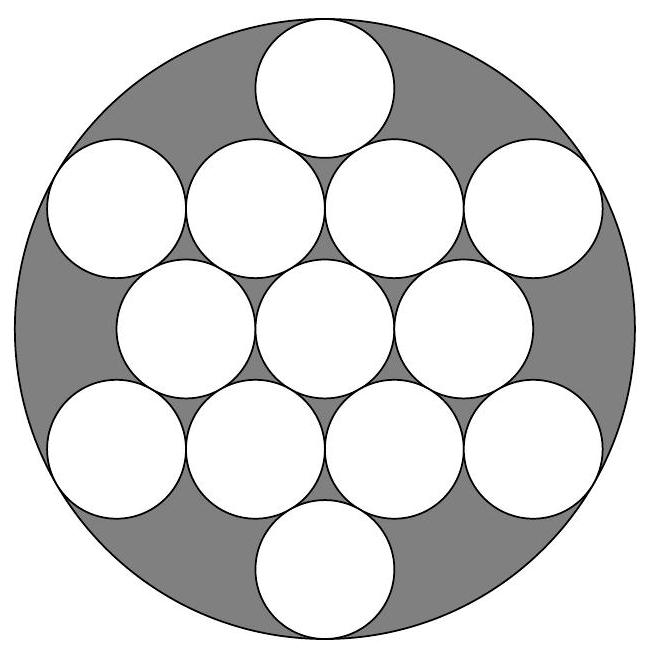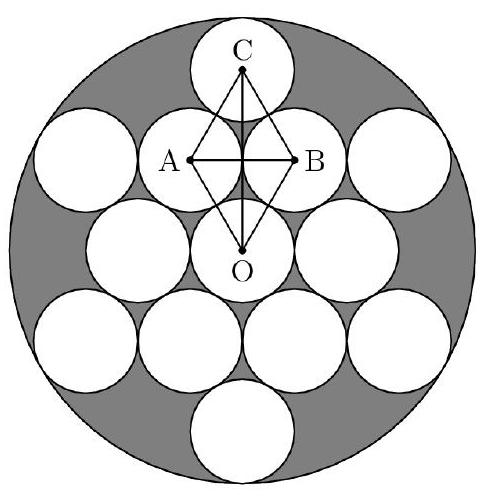Problem:
The figure below shows circles of radius within a larger circle. All the intersections occur at points of tangency. What is the area of the region, shaded in the figure, inside the larger circle but outside all the circles of radius

Answer Choices:
A.
B.
C.
D.
E.
Solution:

In the diagram above, notice that triangle and triangle are congruent and equilateral with side length 2. We can see the radius of the larger circle is two times the altitude of plus 1 (the distance from point to the edge of the circle). Using triangles, we know the altitude is . Therefore, the radius of the larger circle is .
The area of the larger circle is thus , and the sum of the areas of the smaller circles is , so the area of the dark region is .
We can form an equilateral triangle with side length 6 from the centers of three of the unit circles tangent to the outer circle. The radius of the outer circle is the circumradius of the triangle plus . By using or , we get the radius as .
The shaded area is thus (A) .
Like in Solution , we can form an equilateral triangle with side length 6 from the centers of three of the unit circles tangent to the outer circle. We can find the height of this triangle to be . Then, we can form another equilateral triangle from the centers of the second and third circles in the third row and the center of the bottom circle with side length . The height of this triangle is clearly . Therefore the diameter of the large circle is and the radius is . The area of the large circle is thus . The total area of the smaller circles is , so the shaded area is .
The problems on this page are the property of the MAA's American Mathematics Competitions